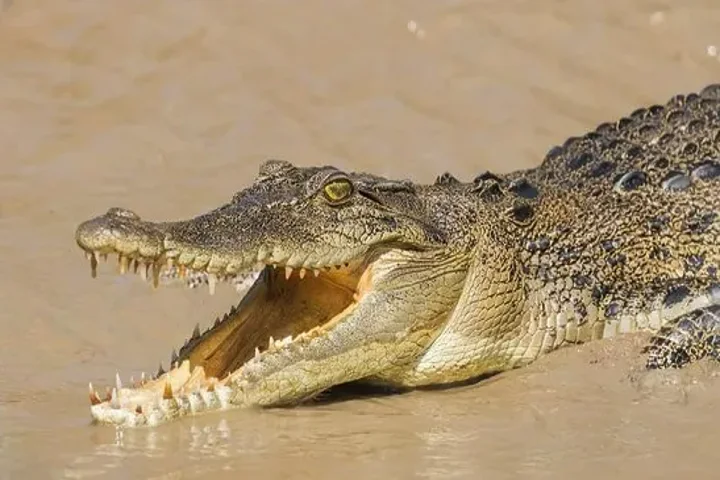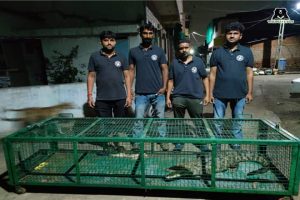Availability of abundant prey is vital for the conservation of a huge number of large predators and that is precisely happening in the Northern Territory of Australia. A report in smithsonianmag.com mentioned that the population of saltwater crocodiles of this region are thriving as they are getting to eat more feral pigs than earlier.
Suggesting this in a study published in the journal Biology Letters, scientists have compared the bones of crocodile specimens which are 40 to 55 years old and kept in museum with those of the present-day reptiles and noted the change and shift in their diet over a period of time.
In a statement, the Director of Griffith’s Australian Rivers Institute, Stuart Bunn said: “We measured the naturally occurring carbon and nitrogen isotopes extracted from the crocodile’s bones and other tissue which are derived directly from the animal’s diet. This gives truth to the old adage ‘you are what you eat’.”
This comparison of the bones highlighted that the modern reptiles inhabiting the Northern Territory had lower values of carbon-13 and nitrogen-1 isotopes. This clearly shows that the reptiles were consuming more terrestrial food, according to Hamish Campbell.
Campbell who headed the research is an environmental engineer at Charles Darwin University.
Elaborating on this, Mariana Campbell told the media: "Our results show that they have shifted from a marine-estuarine based diet, such as fish, marine turtles, to a more terrestrial-based diet of feral pigs and buffalo. A reduction in estuarine prey may have also contributed to the crocodiles' diet change."
This species of crocodiles can grow up to 23 feet in length and can weigh as much as 2,000 pounds and interestingly can hold their breaths for up to seven hours. Preying on large animals, they hunt deer, cattle, wild buffalo and kangaroos and have been inhabiting the planet for the last 65 million years.
Excessive and unrestricted hunting of crocodiles had reduced the crocodile numbers drastically in Australia and by the 1970s there were just a few thousand remaining. With authorities putting in place regulations to protect them, their numbers have increased.
Highlighting this, Campbell informed the Guardian: “Crocodiles have gone from a population of … probably a few thousand individuals across the top of Australia in the 1970s, to over 100,000 adults in the Northern Territory alone.”
Also read: How Crocodiles and Birds Survived a giant Asteroid 66 Million Years Ago
Scientists feel that with their population increasing, there was intense competition for food which may have made these reptiles to start eating the feral pigs. “There isn’t anything else out there in the floodplain that exists at that high a nutritional value and biomass that could be supporting the crocs,” remarked Campbell.
The study’s authors wrote that the recovery of crocodile numbers was much slower in other parts of Australia and one probable cause may have been that these habitats did not have a large feral pig population to provide a food base.
Regarded as a destructive creature, the population of feral pigs has increased over the past years and crocodiles may have contributed in keeping their numbers in check and thus help reduce their negative ecological and agricultural impacts.
In conclusion, the authors observed: “The extensive recovery of the estuarine crocodile population in the study area appears to have been supported by access to an increased abundance of invasive terrestrial prey (i.e. feral pigs). The study highlights the significance of prey availability in contributing to large carnivore population recovery.”




















